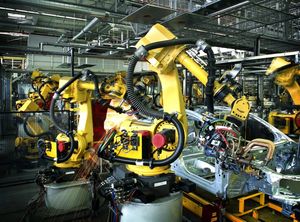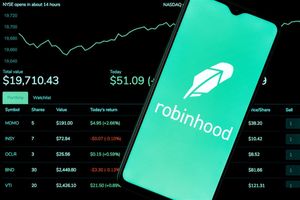
The global financial landscape is a swirling vortex of inflation, shifting interest rate policies, and often-cautious consumer sentiment. Within this dynamic environment, the titans of the technology sector—Apple (NASDAQ: AAPL), Microsoft (NASDAQ: MSFT), Alphabet (NASDAQ: GOOGL), Amazon (NASDAQ: AMZN), and Meta (NASDAQ: META)—find themselves at a critical juncture, their performance intricately tied to these broader macroeconomic forces. While some companies are experiencing significant tailwinds from the burgeoning Artificial Intelligence (AI) revolution and anticipated interest rate cuts, others face persistent headwinds that challenge their traditional growth narratives. The interplay between these economic indicators and tech sector growth is creating a complex tapestry, with profound implications for investors and the global economy.
Economic Crosscurrents: What Happened and Why It Matters
The period spanning late 2021 through 2025 has been a rollercoaster for Big Tech, marked by significant macroeconomic shifts. Rising inflation, particularly reaching a 40-year high of 7.9% year-over-year in February 2022, presented a "double whammy," impacting both sales and profit margins while eroding the value of substantial cash holdings for many tech giants. For instance, Apple (NASDAQ: AAPL) faced considerable inflationary pressures, which, combined with supply chain disruptions for its iPhone 14 Pro and Pro Max in late 2022, led to a 5% year-over-year revenue decline in its December 2022 quarter. Amazon (NASDAQ: AMZN) reported a net loss of $3.8 billion in early 2022, with inflation adding approximately $2 billion in expenses, underscoring the direct financial strain.
In response to surging inflation, the Federal Reserve initiated a series of aggressive interest rate hikes starting in March 2022. This tightening monetary policy significantly impacted growth stocks, including tech companies, whose valuations often rely on discounted future earnings. Higher interest rates increased borrowing costs and made future cash flows less attractive, leading to a notable slump in tech stock performance throughout 2022. Amazon's (NASDAQ: AMZN) stock, for example, saw a long-term relative decline exceeding 30% during the Fed's rate hike period. However, a significant pivot occurred in September 2025, when the Federal Reserve cut its benchmark federal funds rate by 25 basis points, the first rate cut of the year. This move, influenced by a weaker job report and a slight uptick in inflation, led to a surge in tech stocks and major indexes hitting record highs, signaling a potential shift towards a more favorable monetary easing environment for growth-oriented companies.
Consumer sentiment, often a reflection of economic certainty and fears of recession, also played a crucial role. Weaker consumer confidence directly impacted demand for discretionary tech products and advertising spending. Alphabet (NASDAQ: GOOGL) and Meta (NASDAQ: META), heavily reliant on digital advertising, experienced a slowdown in ad spending, with Alphabet's consolidated revenues up only 1% year-over-year in Q4 2022. Apple (NASDAQ: AAPL) also saw its iPhone sales decline by 8% in the December 2022 quarter due to a difficult macroeconomic environment and supply shortages. However, resilient earnings, particularly in cloud computing and AI-driven initiatives, began to lift market sentiment in late 2024 and early 2025, with companies like Amazon (NASDAQ: AMZN) beating earnings and sales estimates in May 2025, largely due to AI bets starting to pay off. The "Magnificent Seven" tech companies, in particular, have shown a remarkable ability to rebound, fueled by AI-driven growth and strong balance sheets, contributing disproportionately to overall market gains.
The Shifting Sands: Who Wins and Who Loses?
The current macroeconomic landscape creates distinct winners and losers among the Big Tech players, largely depending on their business models' exposure to consumer discretionary spending, their reliance on advertising, and their strategic investments in AI and cloud computing.
Microsoft (NASDAQ: MSFT) emerges as a likely winner. Its diverse business model, encompassing robust enterprise software (Office 365), dominant cloud computing (Azure), and significant AI investments (Copilot), provides substantial insulation from consumer sentiment fluctuations. While inflation affects operational costs, Microsoft's enterprise segment, with its long-term contracts, offers considerable stability. Furthermore, as a growth-oriented company, Microsoft stands to benefit significantly from anticipated interest rate cuts, reducing borrowing costs and potentially boosting its stock price. Its strong position in the AI and cloud computing boom ensures continued robust growth.
Alphabet (NASDAQ: GOOGL) also leans towards being a winner. Despite its heavy reliance on digital advertising, which can be sensitive to economic downturns, Alphabet's (NASDAQ: GOOGL) leadership in AI development (Gemini) and strong Google Cloud offering provide significant tailwinds. The company is well-positioned for long-term growth, and like Microsoft, it stands to benefit from more aggressive interest rate cuts. Strong YouTube advertising momentum and diversification further bolster its position.
Amazon (NASDAQ: AMZN) presents a mixed outlook. Its dominant cloud computing service, Amazon Web Services (AWS), is a clear winner and highly resilient, often outperforming its retail segment during economic slowdowns. AWS also benefits directly from the broader AI expansion. However, Amazon's (NASDAQ: AMZN) vast e-commerce operation remains highly exposed to consumer discretionary spending, inflationary cost pressures (logistics, shipping, labor), and shifts in consumer sentiment. While its low overhead and competitive pricing can help maintain market share, the retail arm faces more significant headwinds.
Apple (NASDAQ: AAPL) appears more vulnerable, making it a likely loser in this environment. The company is heavily reliant on sales of high-end consumer electronics, which are directly impacted by reduced consumer discretionary spending due to inflation and weak consumer sentiment. Higher interest rates also increase Apple's (NASDAQ: AAPL) interest expenses and make its premium products less attractive compared to lower-priced alternatives in a tightening economy. Furthermore, Apple's (NASDAQ: AAPL) significant reliance on Chinese manufacturing exposes it to ongoing geopolitical and supply chain risks. Its perceived lag in the AI race has also been noted by investors.
Meta (NASDAQ: META) is arguably the most vulnerable, making it a likely loser. Its business model is primarily dependent on digital advertising revenue from its social media platforms (Facebook, Instagram, WhatsApp), a sector highly sensitive to corporate ad budgets and overall consumer sentiment. Persistent inflation and weak consumer confidence directly impact ad spending, Meta's (NASDAQ: META) core business. Additionally, its extensive and capital-intensive investments in the metaverse face higher financing costs with elevated interest rates, and the returns on these long-term bets remain uncertain. Expectations of declining consumer spending and household financial health further pressure Meta's (NASDAQ: META) revenue outlook.
Industry Impact and Broader Implications
The macroeconomic currents not only re-evaluate individual tech giants but also cast a long shadow over the broader technology industry, influencing trends, creating ripple effects, and shaping regulatory landscapes. The tech sector, while resilient, is undergoing a profound transformation.
The most significant trend is the accelerated adoption of Artificial Intelligence (AI). AI is a powerful tailwind, driving massive investments in hardware, data centers, and cloud infrastructure. Companies like Nvidia (NASDAQ: NVDA), Microsoft (NASDAQ: MSFT) Azure, Alphabet (NASDAQ: GOOGL) Cloud, and Amazon (NASDAQ: AMZN) Web Services are commanding premium valuations as the foundational enablers of this "AI arms race." This push for AI integration is simultaneously accelerating cloud spending as enterprises migrate legacy systems and seek scalable solutions for AI workloads. Global IT spending is projected for robust growth, with data center and software segments seeing double-digit growth. This symbiotic relationship between AI and cloud services fosters innovation, enhances scalability, and enables data-driven decision-making, allowing businesses to optimize operations and handle increased workloads efficiently. However, this rapid adoption also brings challenges, notably a significant spike in cloud costs for many enterprises, creating a new layer of financial management complexity.
These shifts create considerable ripple effects across the tech ecosystem. Big Tech's market dominance, amplified by the AI revolution, is reshaping industries globally. Companies with vast resources and data advantages are solidifying their positions, putting immense pressure on smaller, undercapitalized firms that struggle to match the heavy investment required for AI. This can lead to increased market consolidation and potentially stifle innovation by removing potential disruptors through strategic acquisitions. Conversely, strategic partnerships are becoming increasingly vital for scaling complex generative AI capabilities, fostering an ecosystem of collaboration. For example, Microsoft's (NASDAQ: MSFT) AI initiatives are generating significant economic value for its service and software partners.
The growing influence of Big Tech and the rapid advancements in AI have inevitably intensified regulatory scrutiny worldwide. Governments are implementing stricter regulations covering antitrust, data protection, consumer protection, content moderation, and ethical AI use. The European Union's Digital Services Act (DSA) and Digital Markets Act (DMA) target large online platforms, while the EU's AI Act, nearing finalization, takes a risk-based approach to AI systems, mandating transparency, human oversight, and cybersecurity. In the U.S., the Department of Justice has pursued antitrust cases against tech giants like Alphabet (NASDAQ: GOOGL). These regulations force tech companies to develop scalable and effective compliance strategies, adding another layer of operational complexity and cost.
Historically, the tech sector has navigated similar periods of economic flux. The Dot-com Bust of the early 2000s served as a corrective, weeding out speculative companies and fostering a more disciplined approach to growth. The 2008 Financial Crisis saw tech companies, though facing layoffs, demonstrate resilience and recover faster than other industries. The COVID-19 pandemic fast-tracked digital transformation, underscoring tech's essential role in a remote-first world. The current landscape, with its mix of high inflation, elevated interest rates, and geopolitical uncertainties, shares some characteristics with past downturns, but is unique in that many major tech firms are experiencing a full economic cycle at unprecedented levels of maturity. The industry is projected to return to modest growth in 2024, with stronger prospects for 2025, driven by continuous innovation, particularly in AI and cloud computing, indicating a shift towards disciplined growth and strategic investments rather than unbridled expansion.
What Comes Next? Strategic Pivots and New Frontiers
The coming months and years will test the agility and strategic foresight of Big Tech. Short-term pressures from economic slowdowns and policy shifts will continue, while long-term possibilities are heavily anchored in the transformative power of AI and sustained digital transformation.
In the short-term, Big Tech must contend with potential reduced consumer spending due to inflation and economic uncertainty, impacting companies reliant on hardware sales (Apple (NASDAQ: AAPL)) or advertising (Meta (NASDAQ: META), Alphabet (NASDAQ: GOOGL)). Higher borrowing costs, despite recent rate cuts, could still make funding new projects more expensive. Geopolitical tensions and tariffs pose ongoing risks to supply chains and increase operational costs. However, tailwinds like continued enterprise investment in digital transformation and cloud computing (benefiting Amazon (NASDAQ: AMZN) AWS, Microsoft (NASDAQ: MSFT) Azure, Alphabet (NASDAQ: GOOGL) Cloud) and the imperative of AI investment to automate, reduce costs, and improve efficiency will provide robust support. Companies are prioritizing cost-cutting and efficiency to enhance profitability and resilience.
Looking to the long-term, the AI revolution is undeniably the most powerful tailwind, promising a multi-decade bull run for Big Tech. The rapid evolution and adoption of generative AI and large language models are expected to reshape industries, unlock productivity, and drive significant growth. Continued digitalization across all sectors and the expansion of cloud infrastructure will sustain demand for tech-enabled services. Emerging technologies like blockchain, robotics, and the metaverse, though with longer runways, are also expected to drive future growth. However, persistent macroeconomic pressures, regulatory fragmentation, and geopolitical fragmentation could present ongoing challenges, requiring strategic adaptation.
Strategic pivots are already underway. Companies are shifting from experimental AI adoption to enterprise-wide AI transformation, redesigning core business processes. This necessitates significant investment in AI that aligns with core operations, fosters an AI-centric culture, and upskills the workforce. Companies are also prioritizing cost-cutting and efficiency, streamlining operations, and reducing headcount to improve core products and services. Building resilient supply chains through reshoring and geographical diversification is becoming critical due to geopolitical risks. A "growth-at-all-cost" mindset is being replaced by capital allocation discipline, with a focus on sustainable growth and profitability, scrutinizing return on investment for new ventures. Strategic alliances and ecosystem development are also gaining importance for scaling complex capabilities like AI and cybersecurity.
Emerging markets offer both opportunities and challenges. Untapped consumer markets, accelerated digital transformation, and investment in innovation present significant growth avenues. However, political and regulatory risks, infrastructure gaps, economic volatility, and talent shortages remain considerable hurdles.
Potential scenarios for Big Tech include: a prolonged economic downturn, where companies reliant on discretionary spending or advertising face significant pressure; a "Goldilocks" scenario with gradual recovery and Fed easing, benefiting growth-oriented assets and AI-focused giants; or a "new normal" with persistent inflation and trade tensions, demanding sustained focus on supply chain resilience and profitability. Ultimately, agility, strategic investment in AI, and disciplined cost and capital management will be crucial for Big Tech to navigate the evolving macroeconomic landscape.
Conclusion: Navigating the AI Frontier
The past few years have underscored a fundamental truth: Big Tech's fortunes are inextricably linked to the broader macroeconomic environment. While the industry has demonstrated remarkable resilience, its future performance will be defined by its ability to not only withstand headwinds but also to aggressively harness emerging tailwinds.
The key takeaway is the dual nature of the current economic climate. Headwinds like higher interest rates, inflationary pressures, and slowing consumer spending present clear challenges, increasing operational costs and potentially dampening demand. However, these are powerfully counterbalanced by the unprecedented tailwinds of Artificial Intelligence innovation and adoption and the continued, robust growth of cloud computing. AI is not merely a buzzword; it is the primary engine driving robust revenue growth, massive capital expenditures, and increased enterprise IT spending, propelling companies deeply invested in AI infrastructure to stellar performance.
Moving forward, the market for Big Tech will be characterized by an AI-driven surge, but also by a widening performance gap. Companies effectively leveraging AI and possessing resilient cloud strategies will continue to outperform. The sheer scale of investment in AI by major tech players signals a profound transformation, creating new revenue streams and enabling significant productivity gains. However, this also raises questions about market concentration and potential overvaluation in certain AI segments. The industry's ability to convert these vast infrastructure investments into profitable, long-term revenue streams will be paramount.
For investors, vigilance is key in the coming months. They should closely monitor:
- Federal Reserve Policy and Interest Rate Trajectory: Any further rate cuts or shifts in monetary policy will significantly impact borrowing costs and valuations for growth stocks.
- Inflation Data: Persistent core inflation could continue to pressure operating margins and consumer purchasing power.
- AI Monetization and Capital Expenditure: Concrete evidence of how tech giants are monetizing their AI investments and their sustained capital expenditure in AI infrastructure will be crucial indicators of future growth.
- Consumer Spending Trends: While Big Tech has shown resilience, a significant downturn in consumer spending could eventually impact demand for consumer-facing tech products and services.
- Geopolitical Developments and Trade Policies: Global trade tensions, tariffs, and supply chain dynamics will continue to influence production costs and market access for international tech companies.
- Valuations: Given the substantial run-up in tech stocks, investors should critically assess valuations relative to earnings and growth prospects to identify potential risks.
By carefully observing these macroeconomic indicators and Big Tech's strategic responses, investors can better navigate the dynamic landscape and position themselves for the evolving opportunities and challenges in the technology sector. The era of AI-driven transformation is upon us, and how Big Tech adapts to both economic realities and technological imperatives will define its next chapter.





